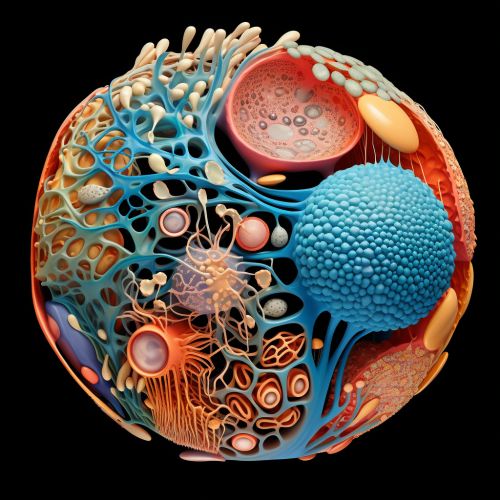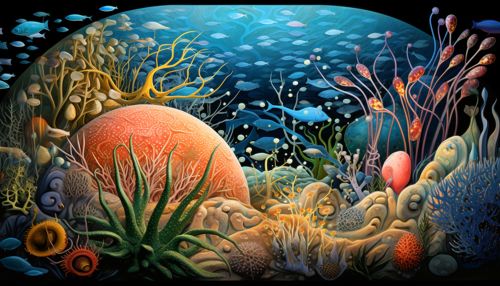Cell Structure
Introduction
The cell, the fundamental unit of life, is a microscopic structure that houses the biological machinery necessary for an organism's survival. Cells come in a variety of shapes and sizes, and their structures are equally diverse. This article will delve into the intricate details of cellular structure, providing a comprehensive overview of the components that make up a cell and their respective functions.


Prokaryotic and Eukaryotic Cells
Cells are broadly classified into two categories: prokaryotic and eukaryotic. Prokaryotic cells, which include bacteria and archaea, are generally smaller and simpler in structure. They lack a defined nucleus and other membrane-bound organelles. On the other hand, eukaryotic cells, which make up plants, animals, fungi, and protists, possess a true nucleus and various specialized organelles.
Prokaryotic Cell Structure
Prokaryotic cells are characterized by their simplicity and small size. Despite their simplicity, they are capable of carrying out all the necessary processes for life. The key features of a prokaryotic cell include the cell wall, plasma membrane, cytoplasm, ribosomes, and nucleoid.
Cell Wall
The cell wall is a rigid layer that surrounds the cell, providing structural support and protection. In bacteria, the cell wall is composed of a unique substance called peptidoglycan. Archaea, on the other hand, have cell walls made of various other substances.
Plasma Membrane
The plasma membrane, also known as the cell membrane, is a semi-permeable barrier that separates the cell's interior from its environment. It is primarily composed of phospholipids, which form a bilayer, and proteins.
Cytoplasm
The cytoplasm is a gel-like substance that fills the cell and houses the cell's components. It is where many of the cell's metabolic reactions occur.
Ribosomes
Ribosomes are the sites of protein synthesis in the cell. In prokaryotes, ribosomes are found freely floating in the cytoplasm.
Nucleoid
The nucleoid is the region in a prokaryotic cell where the DNA is located. Unlike in eukaryotic cells, the DNA in prokaryotes is not enclosed within a nuclear membrane.
Eukaryotic Cell Structure
Eukaryotic cells are larger and more complex than their prokaryotic counterparts. They contain a nucleus and numerous other organelles, each with a specific function.
Nucleus
The nucleus, enclosed by a nuclear envelope, houses the cell's genetic material, or DNA. It is the control center of the cell, regulating gene expression and mediating DNA replication.
Mitochondria
Mitochondria are the powerhouses of the cell, generating energy in the form of ATP through a process called cellular respiration.
Endoplasmic Reticulum
The endoplasmic reticulum (ER) is an extensive network of membranes involved in protein and lipid synthesis. It comes in two forms: rough ER, which is studded with ribosomes, and smooth ER, which lacks ribosomes.
Golgi Apparatus
The Golgi apparatus is responsible for modifying, sorting, and packaging proteins and lipids for transport to their final destinations.
Lysosomes
Lysosomes are the cell's waste disposal system. They contain enzymes that break down waste materials and cellular debris.
Cytoskeleton
The cytoskeleton is a network of protein filaments that provides the cell with structure and shape. It also plays a crucial role in cell division and intracellular transport.
Specialized Cell Structures
In addition to the common structures found in most cells, some cells have specialized structures that enable them to perform specific functions.
Chloroplasts
Found only in plant cells and some algae, chloroplasts are the sites of photosynthesis, the process by which light energy is converted into chemical energy.
Vacuoles =
Vacuoles are large, fluid-filled organelles that store water, nutrients, and waste products. They are particularly large in plant cells, where they also contribute to turgor pressure.
Cell Wall (in plants) =
Plant cells, unlike animal cells, are surrounded by a rigid cell wall made of cellulose. This cell wall provides additional support and protection.
Conclusion
Understanding the structure of cells, the basic units of life, is fundamental to the study of biology. Each component of a cell plays a vital role in its function, and the diversity of cell structures reflects the incredible diversity of life on Earth.
